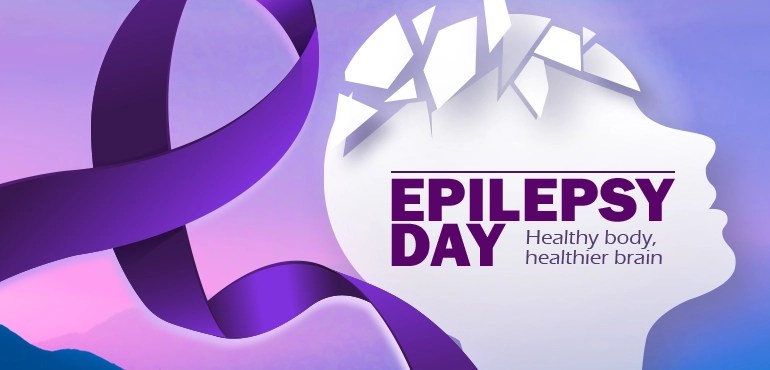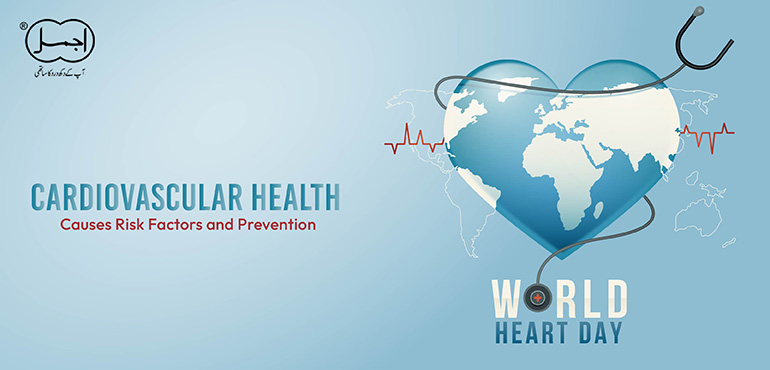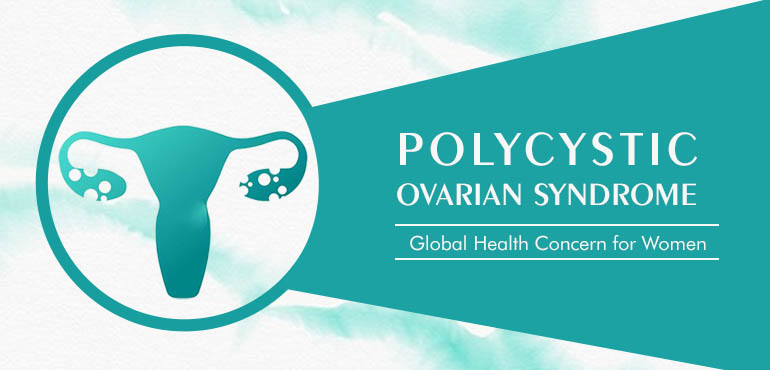Epilepsy Day
Epilepsy Day is a special day organised by the International Bureau for Epilepsy (IBE) and the International League Against Epilepsy (ILAE) to raise awareness about epilepsy disease. It provides a platform to patients with epilepsy where they can voice their issues and share their experiences.
It is an annual event occurring on the second Monday of every February and this year falls on the 13th of February. This day plays a vital role in the fight against the stigma surrounding epilepsy and its patients.
Epilepsy (Sar’)
Epilepsy (Sar’) is a neurological disorder characterised by two or more unprovoked seizures that might be accompanied by the loss of voluntary movement and unconsciousness. Epilepsy occurs when there is an increase in the flow of electrical charges through the neurons. The occurrence of two unprovoked seizures in twenty-four hours is necessary for the diagnosis of epilepsy.
Approximately, 50 million people across the world have been diagnosed with epilepsy (World Health Organization, 2022). In Pakistan, the prevalence of epilepsy is 9.99% out of every 1000 individuals (Khatria et al., n.d.).
The first mention of epilepsy disease is found in the treatise of the Greek philosopher Hippocrates. He recognized it as a brain disorder which develops when “the fetus is still in the womb” and is manifested when a large amount of air accumulates inside the body and causes obstruction to blood flow in the vessels (Tsoucalas et al., 2018).
Ibn Sina, the great Persian physician, suggested the association of different types of epilepsy with various parts of the body. He believed that Maraqq (a membrane located in the abdominal area) could transport Bokhar (vapours) and Reeh (wind) towards the brain triggering an epileptic attack (Dadmehr et al., 2018).
Aetiology
The famous treatise of Hippocrates “De Morbo Sacro” sheds light on the association between personality and epilepsy. According to him, phlegmatic temperament (Balghami Mizaj) poses a risk of epilepsy whereas choleric temperament (Safrawi Mizaj) plays a protective effect against epilepsy.
He also specified two humours that play a part in bringing the onset of this disease:
- Yellow bile (Safra)
- Phlegm (Balgham)
(Hoppe, 2019)
Contemporary Unani studies have revealed that epilepsy occurs due to the pressure produced on the nerves by the following entities:
- Black bile (Sauda)
- Thick phlegm (Balgham)
- Viscous vapours (Bokhar)
These constituents of the body obstruct the nerves, ventricles or vessels of the brain which may lead to an epileptic attack.
In some cases, endogenous factors like hormones, and excretory substances may also bring the onset of epilepsy.
Congenital epilepsy is caused by genetic mutations, trauma before birth, and head injury resulting from complications during birth.
Classification of Epilepsy
On the basis of the aetiology of epilepsy, it is classified into the following categories:
Primary Epilepsy (Sar’ Asli)
Primary epilepsy is said to be idiopathic and occurs as a result of a genetic predisposition.
Secondary Epilepsy (Sar’ Shirki)
Secondary epilepsy occurs as a result of some other disease or ailment. By diagnosing and treating the underlying condition, secondary epilepsy can be cured.
Correlation of Unani therapy with Modern Medicine
Based on the aetiology of epilepsy, Unani scholars have further divided it into sub-categories. These categories also correlate with the classification of epilepsy proposed by modern medicine.
Sar’ Darbi
It is called post-traumatic epilepsy and occurs as a result of injury or trauma to the head.
Sar’ Atrafi
Sar’ Atrafi is an epileptic attack that occurs when Radi (putrified gases) moves from limbs to the brain.
Modern medicine describes it as the warning sign before the onset of a seizure and is termed Epilepsy Aura or Focal Aura Seizure (FAS).
Sar Las’i
It is triggered by the bite of a poisonous insect or animal like a wasp, bee, or scorpion. Modern medicine has named it sting epilepsy after its aetiology.
Sar’ Rahimi
This type of seizure is marked by the involvement of the uterus.
In modern medicine, it is defined as the loss of motor control but without a peak in electroencephalogram readings.
Sar’ Qalbi
This type of epilepsy is associated with cardiac diseases.
In contrast to Unani medicine, the modern physician suggests that this condition is a complication of uncontrolled seizures which damages the cardiac structure and is termed ‘Epileptic Heart’.
Sar’al-Atfal
It is called infantile epilepsy as it occurs in infants and is characterised by convulsions and frothing at the mouth of the child. Unani practitioners are unsure of the cause of Sar’al-Atfal but some believe it may be due to Umm al-Sibyan (Demons that gain powers over pregnant women and cause abortions).
Sar’ Khababi
It is called procursive epilepsy in which seizures are provoked by aggressive exercise or physical endurance.
Sar’ Layli
Seizures occur at night and are called nocturnal epilepsy. The patient may suddenly wake up at night during an attack, or start convulsing while asleep.
Sar’ Nahari
This type of epileptic attack is marked by episodic patterns, the formation of foam around the mouth, and loss of consciousness.
Modern physician defines it as diurnal epilepsy that occurs as recurring fits at any time of the day.
Sign and Symptoms
The most apparent physical signs and symptoms of epilepsy are given as:
- Loss of consciousness
- Involuntary jerking movement of partial/complete body
- Stiffness of body
- Confusion after an attack (lasting for a few seconds to a few minutes)
(NHS, 2020)
Unani scholars believe that the entity responsible for the accumulation of black bile (Sauda) in the body induces the symptoms of the patients. Classifying epilepsy based on the causal factor helps Unani practitioners determine the affected humour which makes the diagnosis and treatment much easier.
(Saher, Zulkifle and Ahmad, 2021)
Blood (Dam)
If the causal agent for the formation of Sauda is Dam then the person is lively and has optimistic thoughts after an epileptic attack.
Yellow Bile (Safra)
If the seizures are triggered by Safra then the patient is a hard worker but is easily irritable and has a high risk of insomnia. The episodes of epilepsy usually occur on an empty stomach in these people.
Phlegm (Balgham)
If Balgham causes Sauda to concentrate then the seizure is short and less severe. The patient is gloomy and lethargic after the epilepsy attack (Waseem, Jamal and Fazil, 2020).
Unani Treatment of Epilepsy
In addition to the superficial symptoms of seizures, Unani practitioners also rely on the following few methods for diagnosing patients:
- Pulse—- Erratic and unsteady pulse is common after an episode of epilepsy
- Veins—- Prominent and bulging veins also indicate epilepsy
Principles of Treatment (Usool-e-Ilaj)
Unani therapy for epilepsy is founded on several basic principles of treatment. These Usool-e-Ilaj ensure a uniform curative approach for everyone. For epilepsy the patients are nursed with the following treatments in mind:
Herbal Therapy
Herbal therapy has been an important part of Unani medicine for treating neurological diseases. A few herbs have been used by Unani scholars, and their anti-epileptogenic effects have been studied in different trials.
Lavender oil has been used by epileptic patients due to its anti-convulsant properties. It has the ability to modulate gamma-aminobutyric acid (GABA) systems which interfere with neuronal transmission (Bahr et al., 2019).
Cilantro leaves are culinary herbs used in food throughout the world. The trials done on this herb shows that it activates the potassium channels of the brain, thereby inhibiting the overstimulation of nerves (Manville and Abbott, 2019).
Cannabidiol is a medicinal herb used for the treatment of chronic pain and neurodegenerative disorders before it was abused as a drug. Most trials have shown that cannabidiol improves the recurrence of seizures in the participants. It also lightens the intensity of associated symptoms in epilepsy patients. However, some participants disclosed gastrointestinal issues attributed to the use of cannabis (Gaston and Szaflarski, 2018).
Dietary Interventions (Ilaj Bil Giza)
Unani medicine is the first medical practice that focused on diet and nutrition for epilepsy. Through trial and error, Unani scholars have hit the bull’s eye for dietary approaches that can support other methods of treatment for epilepsy.
Unani practitioners believe those foods that produce less quantity of blood and are cold in nature are beneficial for epilepsy. Soft to chew and easy to digest food keeps the persistent fits in check. Mostly these foods are recommended to be added to the diet of the patients.
- Whey protein
- Lettuce
- Mutton and bread soaked in pomegranate juice
In contrast, foods that irritate the intestines and aggravate indigestion or constipation should be avoided. Hard-to-digest foods produce black bile, viscous phlegm, and flatulence, and should be avoided. These foods include the following:
- Beef
- Lentils
- Garlic
- Cheese and other dairy products
(Waseem et al., 2020)
Regimental Therapy (Ilaj Bil Tadbeer)
For regimental therapy, rituals that can evacuate harmful substances like Sauda are used. Unani medicine also provides calming rituals that can soothe the nerves and reduce the chronic episodes of seizures.
- Massage (Dalak) — A body and head massage can relax the nerve impulse. Some practitioners also recommend the use of essential oils like Roghan Gul and Roghan Qust.
- Exercise (Riyazat) — Mild to moderate exercises are ideal to prevent seizures. Unaani therapy does not endorse sedentary life and strict exercise regimens.
- Bath (Hammam) — Taking a bath in warm water relaxes the nerves and muscles of the body. However, prolonged stay in scorching water should be avoided as it can cause hypotension
- Cupping (Hijama) — For epilepsy, wet cupping is favoured in which a small amount of blood is removed. Wet cupping is done on the back of both legs and should be followed by complete body and head massage.
(Eghbalian et al., 2019)
Products by Ajmal Dawakhana
Ajmal Dawakhana is responsible for generating the biggest assortment of premium quality herbal products. The certified products of Ajmal Dawakhana used for the treatment of epilepsy are:
Habbe Sara
It is the most effective herbal remedy for epilepsy seizures. It gradually decreases the intensity and frequency of seizures. Its two major ingredients are Jund and Aloe Vera.

Majun Azraqi
It strengthens the nerves of the body thereby regulating neurological disorders like paralysis and epilepsy

Majoon Najah
It is primarily used for treating melancholia but also reduces epileptic fits. It is composed of Indian Gooseberry, Myrobalan, and Polypody.

Khameera Gaozaban Jadwar Ood Saleeb
Khameera Gaozaban is known for improving neuronal control and is used to manage epilepsy, especially infantile epilepsy. It is composed of Gaozaban, Ood Saleeb, Kashneez Khusk, and Abresham.

From the above discussion, we can conclude that Unani medicine is proficient in regulating protracted epilepsy. Unani practice is the first system of medicine that identified epilepsy as an individual disease with plausible causative vehicles. Unani practitioners have been looking to find ways that can be helpful in minimising the impact of this disease on its victim. Some protocols recommended by the Unani experts are diet good for digestive health, exercise, relaxing the body and removal of detrimental waste from the body.
- World Health Organization (2022). Epilepsy. [online] World Health Organization. Available at: https://www.who.int/news-room/fact-sheets/detail/epilepsy.
- Khatria, S., Iannacconea, Ilyasb, M., Abdullahb, S. and Saleemc (n.d.). Epidemiology of Epilepsy in Pakistan: review of literature.
- Tsoucalas, G., Spengos, K., Panayiotakopoulos, G., Papaioannou, T. and Karamanou, M. (2018). Epilepsy, Theories and Treatment Inside Corpus Hippocraticum. Current Pharmaceutical Design, 23(42), pp.6369–6372.
- Dadmehr, M., Amini-Behbahani, F., Eftekhar, B., Minaei, B. and Bahrami, M. (2018). Peritoneum as an origin of epilepsy from the viewpoint of Avicenna. Neurological Sciences, 39(6), pp.1121–1124.
- Hoppe, C. (2019). Citing Hippocrates on depression in epilepsy. Epilepsy & Behavior, 90, pp.31–36.
- NHS (2020). Symptoms – Epilepsy. [online] NHS. Available at: https://www.nhs.uk/conditions/epilepsy/symptoms/.
- Saher, S.K., Zulkifle, Mohd. and Ahmad, W. (2021). The Concept of Black Bile and Its Importance in Maintenance of Health. International Journal of Health Sciences and Research, 11(4), pp.106–113.
- Waseem, A., Jamal, A. and Fazil, U.A. and M. (2020). Epilepsy and its Management in Unani Medicine. Acta Scientific Neurology, [online] 3(9), pp.11–18.
- Bahr, T.A., Rodriguez, D., Beaumont, C. and Allred, K. (2019). The Effects of Various Essential Oils on Epilepsy and Acute Seizure: A Systematic Review. Evidence-Based Complementary and Alternative Medicine, 2019, pp.1–14.
- Manville, R.W. and Abbott, G.W. (2019). Cilantro leaf harbors a potent potassium channel–activating anticonvulsant. The FASEB Journal, 33(10), pp.11349–11363.
- Gaston, T.E. and Szaflarski, J.P. (2018). Cannabis for the Treatment of Epilepsy: an Update. Current Neurology and Neuroscience Reports, 18(11).
- Waseem, A., Jamal, A., Akram, U. and Fazil, M. (2020). Epilepsy and its Management in Unani Medicine. Acta Scientific Neurology, 3(9), pp.11–18.
- Eghbalian, F., Mohammadi Kenari, H., Kordafshari, G., Karimi, M., Atyabi, A. and Shirbeigi, L. (2019). The Role of Phlebotomy (Fasd) and Cupping in the Treatment of Epilepsy from Perspective of Persian Medicine. Iranian journal of public health, 48(7), pp.1392–1394.




